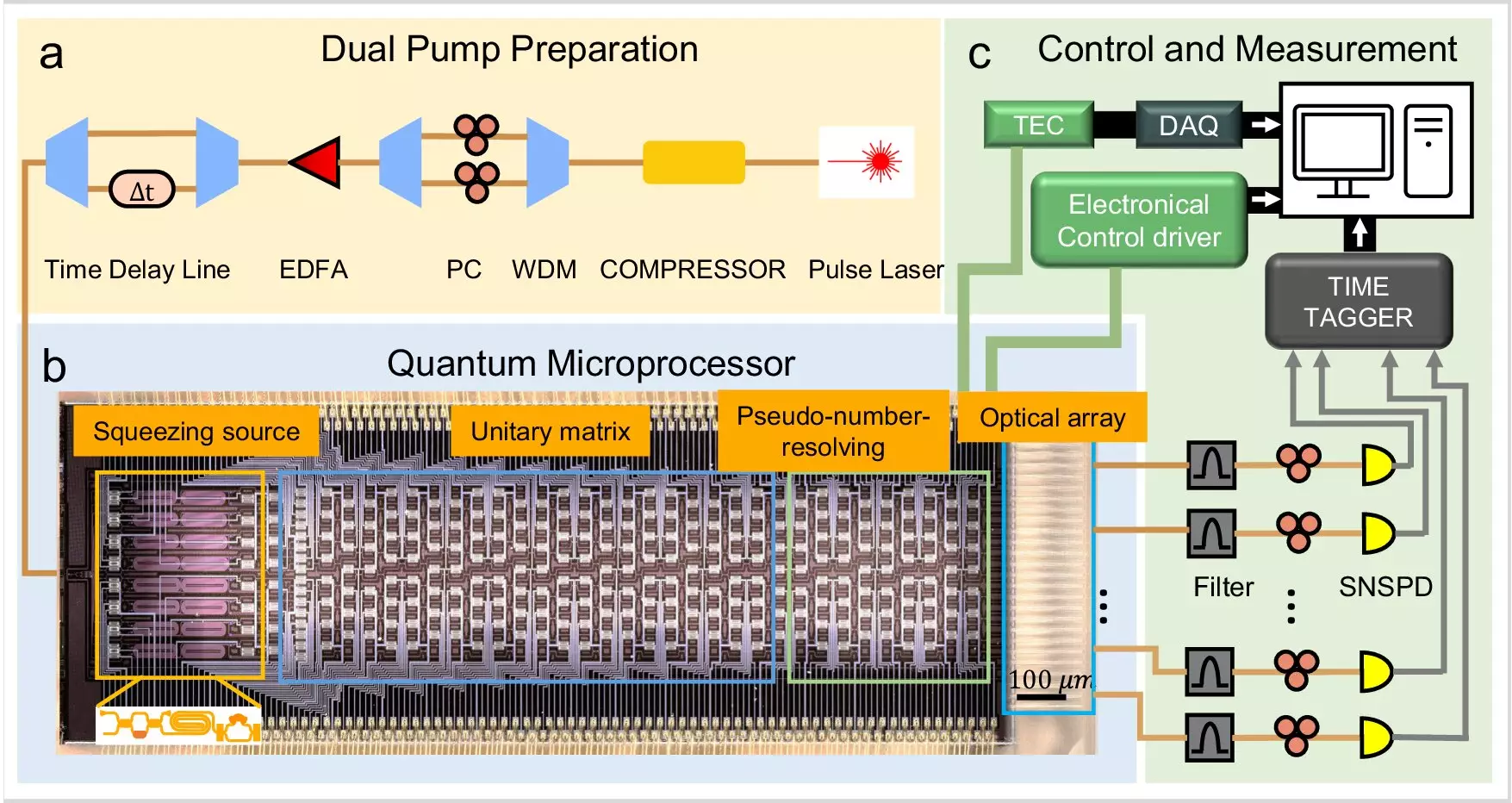In the realm of scientific research, the complex interactions of molecules and their properties have long posed formidable challenges, especially when explored through traditional computational methods. Quantum simulation emerges as a groundbreaking solution, enabling scientists to model intricate systems that classical computers struggle to analyze. From the realms of financial modeling to breakthroughs in pharmaceuticals, quantum simulation holds the potential to revolutionize various fields by allowing for the intricate study of phenomena such as molecular vibronic spectra — a vital aspect in understanding molecular behavior during design and analysis processes.
The capacity to simulate molecular spectra provides deeper insights into molecular structures and interactions. Until now, conventional supercomputers have been unable to handle the computational demands of characterizing these spectra accurately. Researchers around the globe are diligently pursuing advancements in quantum computing and algorithm design, yet challenges such as noise and limited accuracy have constrained their efforts to simplistic molecular structures.
Exciting developments have emerged from the engineering researchers at The Hong Kong Polytechnic University (PolyU), who recently unveiled a quantum microprocessor chip capable of simulating complex molecular structures. This significant achievement positions PolyU at the forefront of quantum technology breakthroughs. The work led by Professor Liu Ai-Qun, a distinguished figure in quantum engineering, alongside postdoctoral researcher Dr. Zhu Hui Hui, has resulted in a state-of-the-art quantum microprocessor that can effectively simulate molecular vibronic spectra of larger and more complex molecules than previously attainable.
The innovative device, described in their paper published in *Nature Communications*, integrates a linear photonic network with squeezed vacuum states to facilitate this process. Unlike existing quantum models, this approach allows for more nuanced simulations that account for the intricacies of quantum behavior, such as superposition and entanglement.
The newly developed 16-qubit microprocessor chip marks a pivotal step in quantum simulations. Designed with cutting-edge technology, this microprocessor enables not only simulation but also the integration of hardware functionalities necessary for applying real-world quantum algorithms. The accompanying hardware system includes advanced optical, electrical, and thermal packaging, symbolizing an impressive feat of engineering that provides the foundation for practical quantum computations.
The potential applications of this quantum microprocessor are vast. Researchers envisage scenarios where this technology could tackle complex biological challenges, such as simulating the behavior of large protein structures or optimizing reactions at a molecular level. Such capabilities represent a tremendous leap forward in pharmaceutical and biochemical research fields, where understanding molecular interaction dynamics can lead to groundbreaking discoveries.
The research team anticipates that their pioneering work will establish a foundation for future quantum chemistry applications. “With our microprocessor chip, we aim to push the boundaries of practical molecular simulations beyond what classical computing has achieved,” Dr. Zhu noted. The implications of this advancement extend far beyond academic curiosity; they hold the promise of significant impacts on industry and society, particularly in fields reliant on complex molecular behaviors.
More than just a technological innovation, this research is crucial for the evolution of quantum technologies across numerous disciplines, including material science and condensed matter physics. The allure of quantum microprocessors lies in their capacity to process information faster and with greater efficiency than classical counterparts.
The team at PolyU’s notable strides in quantum simulation signify not just technical advancements in molecular spectroscopy but also the dawn of a new era in quantum computing. As they prepare to scale up their microprocessor designs, the prospects of delving deeper into complex molecular interactions bring new hope for breakthroughs in various scientific realms. The transformative journey of quantum technologies continues, unveiling pathways that could reshape our understanding of molecular phenomena and significantly impact numerous applications in the real world. The ongoing exploration of quantum capabilities is not merely an academic pursuit; it is a critical frontier that can drive future scientific and industrial breakthroughs.


Leave a Reply